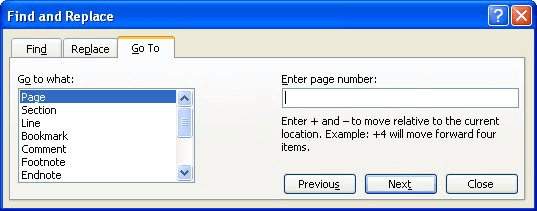Please Note: This article is written for users of the following Microsoft Word versions: 97, 2000, 2002, and 2003. If you are using a later version (Word 2007 or later), this tip may not work for you. For a version of this tip written specifically for later versions of Word, click here: Jumping to an Endnote.
Written by Allen Wyatt (last updated January 18, 2021)
This tip applies to Word 97, 2000, 2002, and 2003
You can use the Go To function of Word to jump to a specific endnote in your document. You do this in the following manner:

Figure 1. The Go To tab of the Find and Replace dialog box.
If there are no endnotes in the document, or if you enter an invalid endnote number, Word positions you at the beginning of the document.
WordTips is your source for cost-effective Microsoft Word training. (Microsoft Word is the most popular word processing software in the world.) This tip (1913) applies to Microsoft Word 97, 2000, 2002, and 2003. You can find a version of this tip for the ribbon interface of Word (Word 2007 and later) here: Jumping to an Endnote.

Learning Made Easy! Quickly teach yourself how to format, publish, and share your content using Word 2021 or Microsoft 365. With Step by Step, you set the pace, building and practicing the skills you need, just when you need them! Check out Microsoft Word Step by Step today!
Different style guides describe different ways of formatting information that appears in a document. One such style guide ...
Discover MoreEndnotes can be placed in a couple of different places in your document, not just at the very end. Here's how you can ...
Discover MoreAdding footnotes to a document is essential for some types of writing. How you view those footnotes depends on the ...
Discover MoreFREE SERVICE: Get tips like this every week in WordTips, a free productivity newsletter. Enter your address and click "Subscribe."
There are currently no comments for this tip. (Be the first to leave your comment—just use the simple form above!)
Got a version of Word that uses the menu interface (Word 97, Word 2000, Word 2002, or Word 2003)? This site is for you! If you use a later version of Word, visit our WordTips site focusing on the ribbon interface.
Visit the WordTips channel on YouTube
FREE SERVICE: Get tips like this every week in WordTips, a free productivity newsletter. Enter your address and click "Subscribe."
Copyright © 2026 Sharon Parq Associates, Inc.
Comments